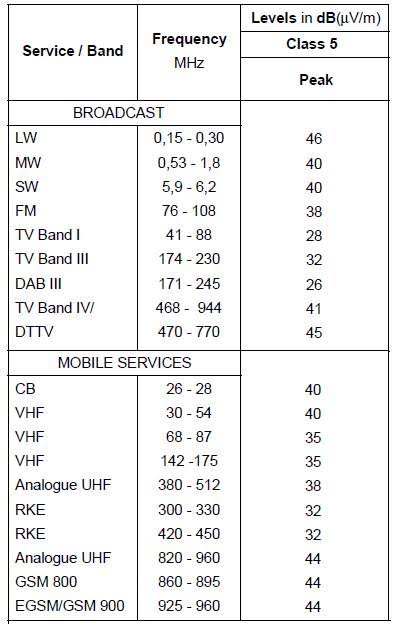Low EMI Power Solutions and Electromagnetic Compatibility (EMC) Standards
Many Analog Devices Power Products are compliant to a specific electromagnetic compatibility standard. The most commonly referenced standards are EN 55022, CISPR 22 Class B, FCC Part 15 Class B, and CISPR 25. When testing a power solution, there are several ways to improve the chance of the device falling within a standard's limits; these include minimizing clock noise, minimizing switching edge ringing, spreading the clock noise (spread spectrum frequency modulation), improving the circuit board layout, using EMI filters or chokes, employing snubber circuits and using shielding (ground plane or enclosure).
One of the most important but often overlooked factors is layout. A poor layout can greatly exacerbate EMI, resulting in a prolonged design time spent figuring out ways to improve the circuit's EMI performance, while at the same time trying to keep the design on schedule and within budget.
Because of layout issues, many of our discrete ICs are not listed as EMC compliant, even though there may be data in the datasheet showing that in fact the parts do pass EMI testing. This is because we cannot guarantee EMI performance if we cannot control the layout. On the other hand, many of our µModule power products are specified as compliant to an EMC standard because their integration means they are not affected by layout. In addition, our new family of second generation Silent Switcher power products (Silent Switcher 2, designated with the four digit part number followed by the letter "S") integrate the bypass capacitors, removing the layout obstacle that often is a factor when trying to attain EMI compliance. Note that for all devices, an external EMI filter is both recommended and used on the test and demonstration boards for best performance.
For more information on the Silent Switcher performance, refer to the blog titled "Reduce EMI and Improve Efficiency with Silent Switcher Designs."
Below is a list of some of our popular power solutions targeting systems requiring low EMI emissions.

ADI Low EMI Power Products
DC2130 for Conducted EMI Measurements
To assist with conducted EMI measurement of DC/DC converters, ADI offers demonstration circuit 2130. When combined with a spectrum analyzer, DC2130 makes conducted EMI measurement of DC/DC converters convenient over a wide range of frequencies and EMI levels—beyond the highest automotive conducted EMI test frequencies and below the EMI levels generated by power electronics with the latest chip and printed circuit board designs for low noise. Measurements above 108MHz (the high-end of the CISPR 25 conducted EMI frequency range) are beneficial to predict radiated measurement results from open area test sites or anechoic chambers without the expense and effort associated with those testing methods.
To provide its broad frequency and signal level coverage, DC2130 includes two completely separate Line Impedance Stabilization Networks (LISNs), or artificial networks.
EMC Standards
The following is a summary of key EMC Standards
Federal Communications Commission (FCC) Part 15 Class B (USA)
The FCC’s rules and regulations are located in Title 47 (telecommunications) of the Code of Federal Regulations (CFR). FCC Part 15 covers an assortment of radio frequency devices - electronic equipment that generates RF energy whether it's intentional, unintentional or incidental. As such, it covers high-power intentional radiators, low-power intentional radiators, unintentional radiators and incidental radiators. A Class "B" digital device is a digital device that is marketed for use in a residential environment. A Class "A" digital device is a digital device that is marketed for use in a commercial, industrial or business environment.
Part 15 of the FCC rules states in 15.109 (g), “As an alternative to the radiated emission limits shown in paragraphs (a) and (b) of this section, digital devices may be shown to comply with the standards contained in Third Edition of the International Special Committee on Radio Interference (CISPR), Pub. 22, “Information Technology Equipment – Radio Disturbance Characteristics – Limits and Methods of Measurement.”
CISPR 22 Class B (Global, Europe Origination)
CISPR is the French shorthand for International Special Committee on Radio Interference and is a special committee of the International Electrotechnical Commission (IEC), which is an international standards organization. CISPR 22 is a standard for Information Technology Equipment-Radio Disturbance Characteristics-Limits and Methods of Measurement. There are slight differences between the FCC standard and CISPR 22 (ex. CISPR 22 requires certification over the frequency range of 0.15 MHz to 30 MHz for conducted emissions), but as mentioned above it is an alternative to the FCC standard.

FCC Part 15 vs. CISPR 22 Class B
Conducted EMI Limits

FCC Part 15. vs. CISPR 22 Class B
Radiated EMI Limits
EN 55022 (Global, Europe Origination)
EN 55022 was introduced by CENELEC, the European Committee for Electrotechnical Standardization. EN is shorthand for European Norm. EN 55022 is a modified derivative of CISPR 22. Most products will also require assessment to the companion standard EN 55024, for immunity to electromagnetic interference and transient phenomenon.
In many cases, assuming that an OEM standard has not been provided for a product, the choice of applicable standards is open to interpretation, with the exception of products for sale in Europe.
CISPR 25 (Global, Europe Origination)
CISPR 25 is a global automotive component EMC test developed in 2002 that sets the limits and methods of measurement of radio disturbance characteristics for the protection of receivers used on board vehicles. It deals with both radiated and conducted emissions,
CISPR 25 covers a wide frequency range (150kHz to 960MHz) and has broadband and narrowband limits (broadband includes peak and quasi-peak detector limits). The test levels are not continuous across this frequency range, instead being applied only to utilized radio frequency bands. In CISPR 25 there are five classes of limit lines that can be applied, with five being the most stringent. Often the customer will specify these, if there are no specific customer requirements (i.e. for the after-market). In this case, the manufacturer often performs the tests and applies whatever limit the Electronic Sub Assembly (ESA) passes.

CISPR 25 Class 5 Limits




















